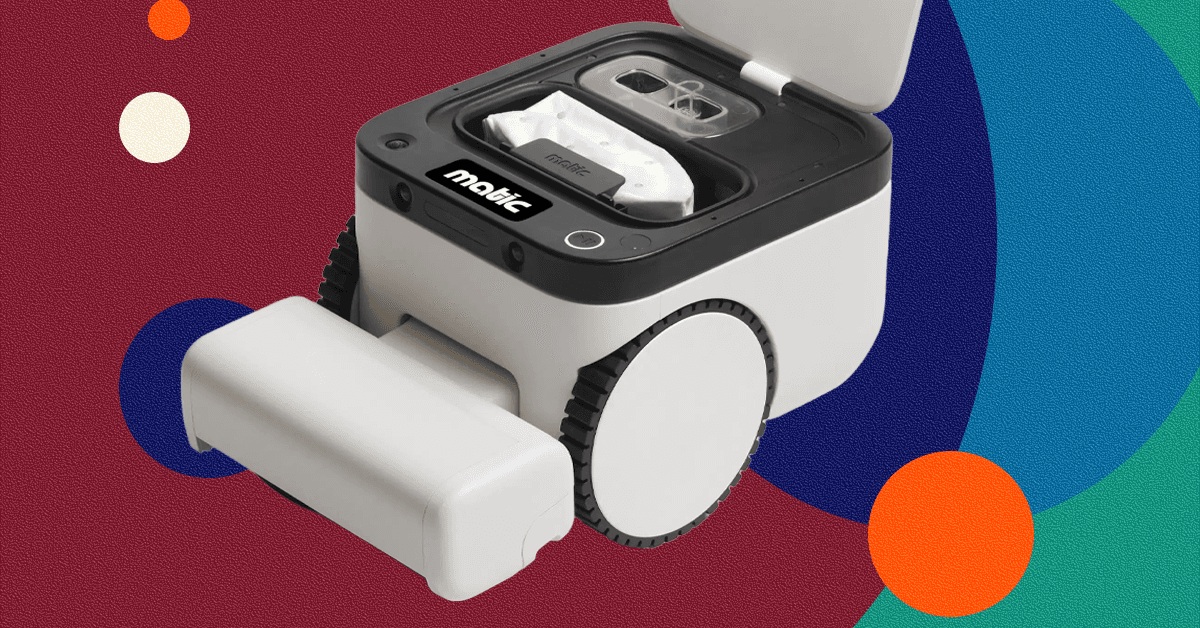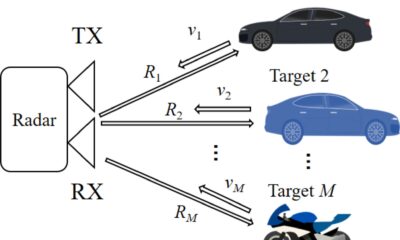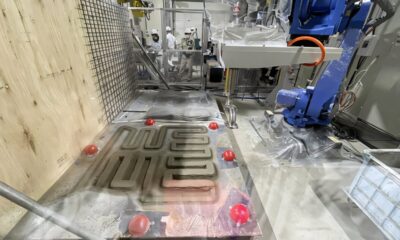Tech
Solar-powered system produces green hydrogen directly from air moisture

by Yin Huajie; Zhao Weiwei, Hefei Institutes of Physical Science, Chinese Academy of Sciences
A team led by Prof. Yin Huajie from the Hefei Institute of Physical Science of the Chinese Academy of Sciences has developed a solar-powered system that produces green hydrogen directly from atmospheric moisture without relying on external water or energy sources.
The results are published in Advanced Materials.
Proton Exchange Membrane Water Electrolysis (PEMWE) technology is one of the primary routes for producing green hydrogen, drawing significant attention due to its high efficiency and high-purity hydrogen output. However, the PEMWE process heavily relies on high-purity water as the reaction raw material, limiting its application in water-scarce regions. Atmospheric water harvesting (AWH), as an emerging approach to obtaining pure water, holds promise as a viable solution to the water shortage issue in the production of green hydrogen.
In this study, the researchers developed a self-sustaining system that couples photothermal atmospheric water harvesting with proton exchange membrane electrolysis.
The system uses hierarchically porous carbon as an adsorbent to capture moisture from the air, which is evaporated by solar heat and fed into a custom-built electrolyzer for hydrogen production. The porous material is fabricated through template synthesis and calcination, followed by surface oxidation to improve water affinity.
It demonstrates remarkable performance. Even under low humidity conditions (as low as 20%), it maintains stable water collection and evaporation performance. Under 40% humidity, the system reached a hydrogen production rate of nearly 300 mL per hour with excellent cycle stability and long-term reliability.
Field tests further confirmed that it can continuously produce green hydrogen using only solar energy, with zero carbon emissions and no external energy input.
This work provides a new pathway for sustainable hydrogen production in water-scarce regions, according to the team.
More information:
Bo Fu et al, Solar‐Driven Atmospheric Water Production Through Hierarchically Ordered Porous Carbon for Self‐Sustaining Green Hydrogen Production, Advanced Materials (2025). DOI: 10.1002/adma.202511336
Provided by
Hefei Institutes of Physical Science, Chinese Academy of Sciences
Citation:
Solar-powered system produces green hydrogen directly from air moisture (2025, September 25)
retrieved 25 September 2025
from https://techxplore.com/news/2025-09-solar-powered-green-hydrogen-air.html
This document is subject to copyright. Apart from any fair dealing for the purpose of private study or research, no
part may be reproduced without the written permission. The content is provided for information purposes only.
Tech
Smart Home Deals and Half-Off Tools at the Home Depot

Apparently, it’s always Friday at the Home Depot. Or at least, the Home Depot Black Friday deals have slipped all customary bounds of the calendar: Online deals started November 5 and will go all the way to December 3.
This includes some very steep discounts on flagship tool brands like Milwaukee, Ryobi, and DeWalt tools—by which I mean half-off and buy-one-get-one steep. Seemingly half the store is on sale. But here’s an early look at some of the best deals to look out for as Black Friday rings in early.
Discounts on Google Nest and Other Smart Home Devices
A couple of WIRED’s top-tested smart home devices from Google Nest have significant discounts at Home Depot right now, alongside discounts on a mess of smart home devices from Echo, Eufy, and others.
The newest Nest Learning Thermostat is a genuine blockbuster device in its category, and the Home Depot is selling it for the lowest price I can find at any retailer right now. The Nest is pretty on the eyes and has no trouble with disconnections or irregularities in the temperature readout, which are surprisingly common among smart home thermostats. It also offers a bunch of fun features, including a readout that changes depending on your proximity to the device. Even better, the Nest thermostat comes with an external temperature sensor that lets you prioritize the readings in a specific room (or part of a room). This allowed WIRED reviewer Nena Farrell to tune the device to her toddler’s bedroom to keep it from getting too stuffy. The larger screen size is also a noticeable upgrade from previous generations, she noted.
The Nest Cam Outdoor 2K requires a little installation, sure: You’ll need to screw in the mount and run a cable. But the cam offers 2K video quality and two-way audio, and doesn’t waste your time with a string of ambiguous notifications like a lot of outdoor cameras: It can accurately detect people, animals, and vehicles. The camera offers sharp video with a 152-degree field of view. It’s the wired outdoor cam that WIRED reviewer Simon Hill recommends above all others—but note that while notifications and live feed don’t require a subscription, you’ll need a $10- or $20-a-month subscription to access more advanced features that include detection of Familiar Faces and 30 to 60 days of video history. Anyway, it’s 20 percent off for Black Friday at the Home Depot, alongside sales on a whole host of other smart home devices.
Buy-One-Get-One Deals on DeWalt Tools
A few tools from home improvement staple DeWalt are on sale for buy-one-get-one at the moment. It’s a bit tough to sort out on the Home Depot’s site, but essentially you’ve got a mix and match of a few select DeWalt tools.
Buy one, and any of the other tools is free. This includes the 13-Inch Cordless String Trimmer ($139), the 20V Cordless Leaf Blower ($179), the 20V MAX XR Cordless Brushless Jigsaw ($239), and the 20V MAX Cordless Brushless Circular Saw ($229)
Aside from that BOGO deal, you can get a free DeWalt tool with the purchase of a battery, or a free DeWalt battery with the purchase of a tool, as detailed here. Or, kinda most of the rest of the DeWalt toolkit is on sale this month for somewhere between 20 percent and 50 percent off. It’s not the steepest discount on the list, but might I suggest WIRED’s absolute favorite drill and driver kit, on sale now for $50 off?
The Home Depot Milwaukee Tools for 50 Percent Off
During the Home Depot’s month-long Black Friday sale, you can also opt to go with buy-one-get-one or 50-percent-off deals on a number of Milwaukee tools. WIRED Reviewer Scott Gilbertson is already on record as loving the Milwaukee Tool ecosystem as a smart investment—to make use of Milwaukee’s excellent battery tech. He now owns dozens, from impact guns to circular saws and a drywall screw gun.
Anyway, the most essential tool in the kit, Milwaukee’s M18 Fuel Brushless Cordless Hex Impact Driver ($179), is on a buy-one-get-one sale alongside other select Milwaukee tools as part of a buy-one-get-one deal that also includes Milwaukee’s brushless cordless grinder ($229) and cordless personal inflator ($199). Other tools include free batteries with select tools, or vice versa.
It’s not always easy when browsing the general site to see which tools are on the BOGO deal, but click the button below and take note of the tools marked “Free With Purchase.”
Buy-One-Get-One Makita, Ryobi, and Ridgid Tools
Once you’ve bought into a tool ecosystem, it’s kinda part of your life now: You’ve chosen a battery pack that will power a whole world of powered implements. Different WIRED staffers have their own preferences. For WIRED reviewers Julian Chokkattu and Pete Cottell both, their personal world is Makita. And Makita is one of the brands with a killer buy-one-get-one at the moment: Just buy one of the Makita tools here and you can select either a free battery pack, or a freebie among seven other Makita tools in the $200 range.
WIRED has not tested all these tools, but Ryobi has a similar deal, on its affordable tool sets, with a BOGO deal on multiple tools and batteries, including an 18-volt, oscillating, sanding, and cutting multitool ($79) for wall and panel work, and an impact wrench ($99).
Ridgid has a similar deal, with a different product set. Ridgid tool bundles with batteries are up to 60 percent off, especially a cordless blower deal with a battery starter kit for more than half off.
Free Christmas Tree Delivery
I remember two things about Christmas-tree shopping as a kid, which was always the best and the worst day. Picking out the tree was, of course, plenty exciting. But then you had to load it. And you had to move it, after wrangling it into a pickup truck. Then you had to unload it, and get it into the house. By the time you’re clear of all that, you might as well just forget Christmas spirit.
Well, the internet is a many-splendored thing. The Home Depot is offering free delivery on Christmas trees during Black Friday, on anything from artificial trees (here’s the best-seller right now) to fresh-cut fir, which is already coming into stock but only from online-only vendors. (Or, if you’d rather, check out WIRED’s roundup of the best artificial Christmas trees, as tested by professionals.
Artificial trees or real ones show up at your doorstep at no additional charge, no pickup truck required. Because we already live in the future.
Power up with unlimited access to WIRED. Get best-in-class reporting that’s too important to ignore. Includes unlimited digital access and exclusive subscriber-only content. Subscribe Today.
Tech
My Robot Vacuum Is My Only Friend

Every single day—weekend, weekday, rain or shine—whichever robot vacuum I’m currently testing starts running at 9 am. It’s always a good sign. I heave a sigh of relief and continue with whatever else I was doing, content that at least that f*cking chore in my house is getting done.
When I first started testing robot vacuums eight years ago, it sometimes seemed like more trouble than it was worth. I cleaned up the floor. I meticulously maintained the different sensors. Now I just don’t care. (I mean, yes, I do care, robot vacuum manufacturers, I just care slightly less.) Even if it gets tripped up on my daughter’s latest knitting project, or it can’t mop the kitchen because I haven’t emptied the water tank. Just go, little soldier, go.
Robot vacuums are so much smarter now. They can navigate through many more surprising minefields of Lego bricks, stuffed animals, or piles of shoes than you might have expected even two or three years ago. As a working parent with two elementary-school-aged kids and a dog, I need all the help I can get. Maybe it will clean the whole house; maybe it will only clean up 50 or 65 percent of it. But as someone who is constantly fighting chaos, consistency is what counts.
It’s a Miss
It took a while for me to reach this Zen state (and also to collect enough robot vacuums to have an army running in every room and floor of my house). Based on my years of talking to many families (and trying to foist used robot vacuums on them), these are a few reasons why a robot vacuum might not be worth it for you.
- You live in a small space. If it only takes you an hour or so to vacuum, why bother?
- Your home has a complicated layout. A lot of 1970s homes have strange, complicated designs—a sunken living room, a playroom that’s up a few stairs, bedrooms upstairs. Although stair-climbing vacuums are on the way, for now, it’s not worth carrying a vacuum from room to room.
- You have rugs with weird tassels. The 1970s were bad for robot vacuums. Shag carpeting is also bad, as is a lot of low furniture.
- You hate maintenance. You really can’t stand emptying the fussy little dust bag or refilling the water container. I’m going to say here that you probably have other problems that need addressing before getting a robot vacuum.
Even I don’t rely solely on a robot vacuum to keep my house clean. I also have a Dyson stick vacuum, a carpet cleaner, and a regular broom and mop in a closet. If my kid spills a bunch of flour under the counter while she’s making pancakes, I’m not going to pull out my phone, open the app, and watch a robot vacuum slowly trundle over to spot-clean it.
It’s also not great for deep-cleaning. No matter how much a company hypes up a robot’s suction power, it will just never be as thorough as even the smallest hand vacuum. It’s just physics. A robot vacuum’s motor and battery are smaller.
Even the best navigation system cannot accommodate everything that happens in a crazy, dynamic environment with a bunch of gremlins and animals running around. If I have people coming over, I still have to walk around and do things like put away cushion forts and pick up the shreds of a log that my dog decided to pluck off the woodpile and bring into the house to gnaw in the warmth and comfort of the living room.
Tech
Your chatbot doesn’t love you: The ‘illusion’ of social AI

Every day, millions of people talk to chatbots and AI assistants such as ChatGPT, Replika and Gemini, but what kind of “relationships” are we really forming with them?
In a special issue of the journal New Media & Society, Dr. Iliana Depounti (Loughborough University) and Associate Professor Simone Natale (University of Turin) explore the rise of “artificial sociality”—technologies that simulate social behavior and emotional connection without actually possessing them.
Their article, “Decoding Artificial Sociality: Technologies, Dynamics, Implications,” reveals a number of issues associated with the rise of Large Language Models (LLMs) and AI chatbots.
It argues that the illusion of friendship or understanding created by AI is being deliberately cultivated by technology companies to increase user engagement, such as Spotify’s “AI DJ” with a friendly human voice and Replika’s “virtual companion” chatbots.
Dr. Depounti said, “Companion generative AI bots such as Replika or Character AI exemplify artificial sociality technologies.
“They are created to foster emotional projection, offering users intimacy and companionship through features like avatars, role-playing, customization and gamification—all with monetary benefits for the companies that design them.
“ChatGPT, too, uses artificial sociality techniques, from referring to itself as ‘I’ to adopting tones of authority, empathy or expertise.
“Though these systems simulate sociality rather than recreate it, their power lies in that simulation—in their ability to engage, persuade and emotionally move millions of users worldwide, raising deep ethical questions.”
The study shows how social cues are engineered into products to keep people interacting longer.
Other issues include:
- Machines only imitate social behavior, but users still project feelings, trust and empathy onto them.
- User data and emotional labor are exploited to train and “personalize” AI systems, raising ethical and environmental concerns about hidden human work and massive data-center energy use.
- Bias and stereotypes in AI systems mirror social inequalities, shaping how gender, class and race are represented in digital conversations.
- Users adapt to AI “companions” through what researchers call “re-domestication”—renegotiating relationships every time a chatbot’s personality or behavior changes.
- The line between authenticity and deception is becoming blurred as AI personalities are marketed as “friends,” “co-workers” or even “influencers.”
Dr. Natale said, “Artificial sociality is the new frontier of human–machine communication in our interactions with generative AI technologies.
“These systems don’t feel, but they are designed to make us feel, and that emotional projection has profound social, economic and ethical consequences. Artificial sociality technologies invite and encourage these projections.”
Behind these apparently effortless conversations, the researchers warn, lies a vast infrastructure of human and environmental cost.
AI models rely on huge datasets drawn from people’s online interactions and often from their conversations with the machines themselves.
This data is then used to “train” chatbots to sound more human—sometimes with users unknowingly performing unpaid emotional or linguistic labor.
At the same time, the servers powering generative AI consume enormous amounts of electricity and water.
The authors highlight a $500 billion investment by major tech firms in new data centers to meet AI demand, describing it as part of an “extractive” system that turns human communication into corporate assets.
More information:
Iliana Depounti et al, Decoding Artificial Sociality: Technologies, Dynamics, Implications, New Media & Society (2025). DOI: 10.1177/14614448251359217
Citation:
Your chatbot doesn’t love you: The ‘illusion’ of social AI (2025, November 12)
retrieved 12 November 2025
from https://techxplore.com/news/2025-11-chatbot-doesnt-illusion-social-ai.html
This document is subject to copyright. Apart from any fair dealing for the purpose of private study or research, no
part may be reproduced without the written permission. The content is provided for information purposes only.
-

 Business1 week ago
Business1 week agoFirst new Amazon electric heavy goods vehicles hit UK roads
-

 Tech1 week ago
Tech1 week agoThe Security Interviews: Colin Mahony, CEO, Recorded Future | Computer Weekly
-

 Fashion1 week ago
Fashion1 week agoGermany’s Adidas achieves highest-ever quarterly sales in Q3 2025
-

 Business1 week ago
Business1 week agoIndia, New Zealand Hold 4th FTA Talks In Auckland On Trade Rules
-

 Tech1 week ago
Tech1 week agoNokia, Rohde & Schwarz collaborate on AI-powered 6G receiver | Computer Weekly
-

 Tech1 week ago
Tech1 week agoOur Favorite Gaming Headset for Xbox Owners Is Discounted
-

 Business1 week ago
Business1 week agoReeves lays ground for painful Budget, but will it be worth it?
-

 Business7 days ago
Business7 days agoSetback for expatriates? Delhi HC upholds mandatory EPFO membership; what this means for foreign staff – The Times of India























